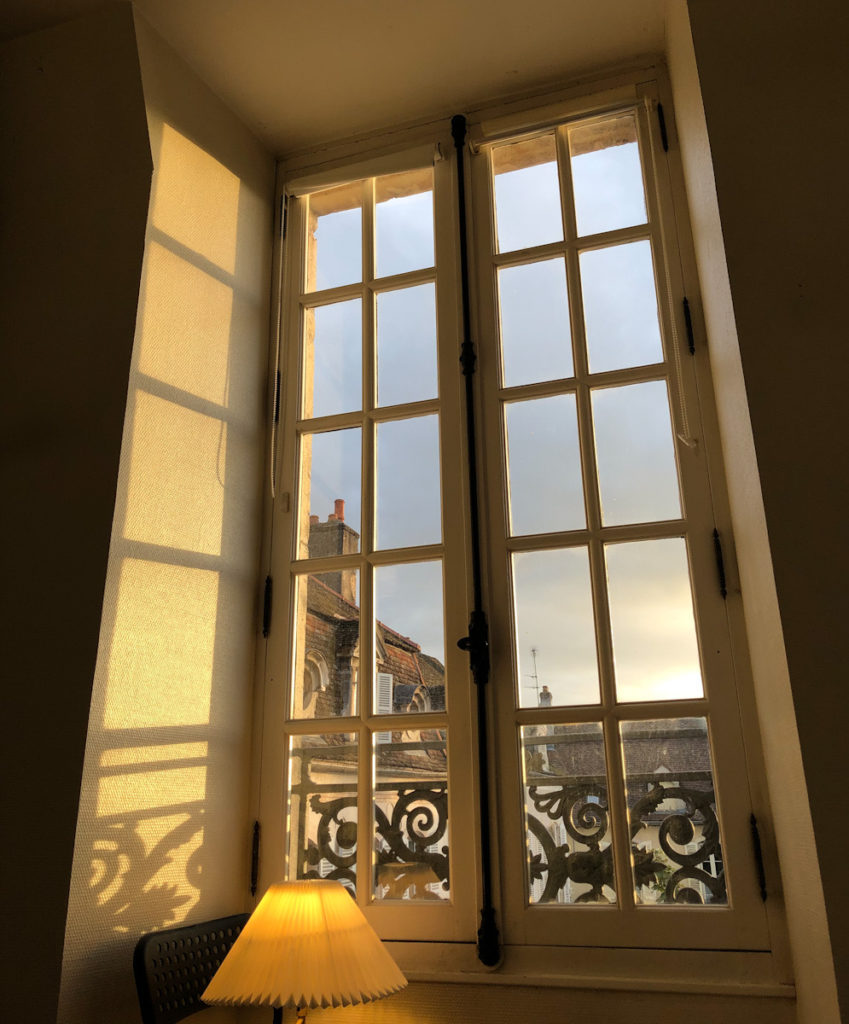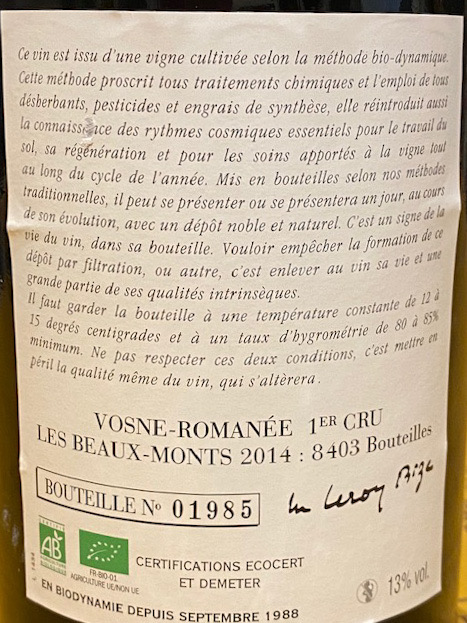Energy, effortlessness, and vivaciousness are terms that I use about a good vin d’emotion. But to attain and maintain these attributes, storage and serving temperature have to be respected and optimised.
Most Burgundy today is well made, and will improve if stored properly. But new tendencies in winemaking ask more from us as regards storage. Particularly, low-sulphur wines (vins natures/natural wines, organic, or biodynamic wines) demand careful reflection and better options for temperature control.
Add to this the global warming that transform cool cellars to warm storage rooms not very suitable for wine ageing.
another view from the window…
Lower sulphur requires lower temperatures
In the old days, normal cellar temperatures – or a cool cupboard – could be sufficient for wine storage. But as we all know, many cellars today reach 20 degrees Celsius in summer, and your regular cupboard floor will go even higher on a hot day.
Let’s face it: While this could perhaps work without disaster for normal wines, it will not ensure their optimal development. And low-sulphur wines – of which there are more and more – will not, I fear, develop well with this kind of storage, and may even suffer damage. I have seen low-sulphur wines die a tragic death due to excessive heat in any number of hobbyist cellars.
Let me be direct: Do not store low-sulphur wines in normal room temperature – 20 degrees Celsius or higher. My recommendation would be 14 degrees or even cooler for these types of wine – consistently.
Wine consultant and biodynamist Antoine Lepetit de la Bigne, who was director of Domaine Leflaive in Puligny-Montrachet, recommends in his book ”What Is So Special About Biodynamic Wine?” a constant storage temperature of 15 Celsius or below for wines with no added sulphur. Ideally, he says, storage should be at 12 Celcius with a +/-two-degree variation. But this is rare even in the best cellars.
His recommendations are for the relatively rare wines with zero added sulphur. But they are also a clear indication that storage of any low-sulphur wines should be handled with respect and care.
Domaine Leroy – amongst the most expensive of Burgundy’s biodynamic wines – recommends storage at 12-15 Celsius both for red and white wines (see label below).
This means one needs either a very cool natural cellar, climate control, or a wine refrigerator if this recommendation is to be followed. And do note the humidity recommendation on the Leroy label: a minimum of 80-85%. This is very high indeed.
To be frank, if one collects expensive biodynamic wines, it would be crazy not to ensure optimal storage conditions for them given the relatively moderate cost of mechanical cooling.
The consequences of hot storage can be severe, and not only because of the risk of wines maturing early. Some will virtually collapse and die under high temperatures.
Serving temperatures – my view!
Many old guidelines regarding serving and storage temperatures are from a time when people had dedicated wine cellars and a room temperature of around 16 Celsius. This is not the case any more, with room temperatures often reaching 20 or even 22 Celsius – not a temperature at which to either store or drink Burgundy.
A lot of people don’t have cellars these days, and therefore one needs a chilled room or a wine fridge to observe the rules of storage and serving.
In my view, red Burgundy should be served at 14-15 Celsius, a temperature which lets the wine unfold as it rises to an optimal temperature of about 16 degrees.
White Burgundy should be served at 7-10 degrees, allowing development in the glass as the temperature rises to an optimal 11 degrees or so.
A wine fridge with two temperature zones is therefore ideal for many collectors, either as the full cellar, or for whites, or as the staging area for wines ready for drinking.
For me, it’s the ultimate luxury to have both red and white Burgundy ready at optimal temperatures (of your choice) near the kitchen or dining room. Just pop the bottle and focus on enjoyment and hedonistic indulgence. What can I say? It’s easy, convenient, and the focus is on pleasure.
Too many wines are tasted too warm, desperately waiting for the cooling sleeve to work its magic. That said, violent and quick chilling of wine is rarely a great idea.
Global warming = cooler serving
With global warming, the ripeness level of wine is on the increase, and the acidity of many tends to be lower. These changes call for some reflection and possible adjustment of serving temperatures.
Hot vintages, in my view, should be served on the cooler side to bring out freshness, acidity, and mineral notes. Both reds and whites benefit from observing this rule.
Again, this is, in the end, a personal preference, but one can always let the wine warm in the glass, also getting some oxygenation as the temperature moderates.
As always, give the wine time. Many great wines have been ruined by stressed serving and drinking.



 - A true vin d’émotion – a Burgundy of passion
- A true vin d’émotion – a Burgundy of passion - A truly hedonistic wine – lively and enjoyable
- A truly hedonistic wine – lively and enjoyable - A vivacious wine for pure indulgance
- A vivacious wine for pure indulgance - A potential vin d´émotion - frais et léger
- A potential vin d´émotion - frais et léger
Leave a Reply
You must be logged in to post a comment.